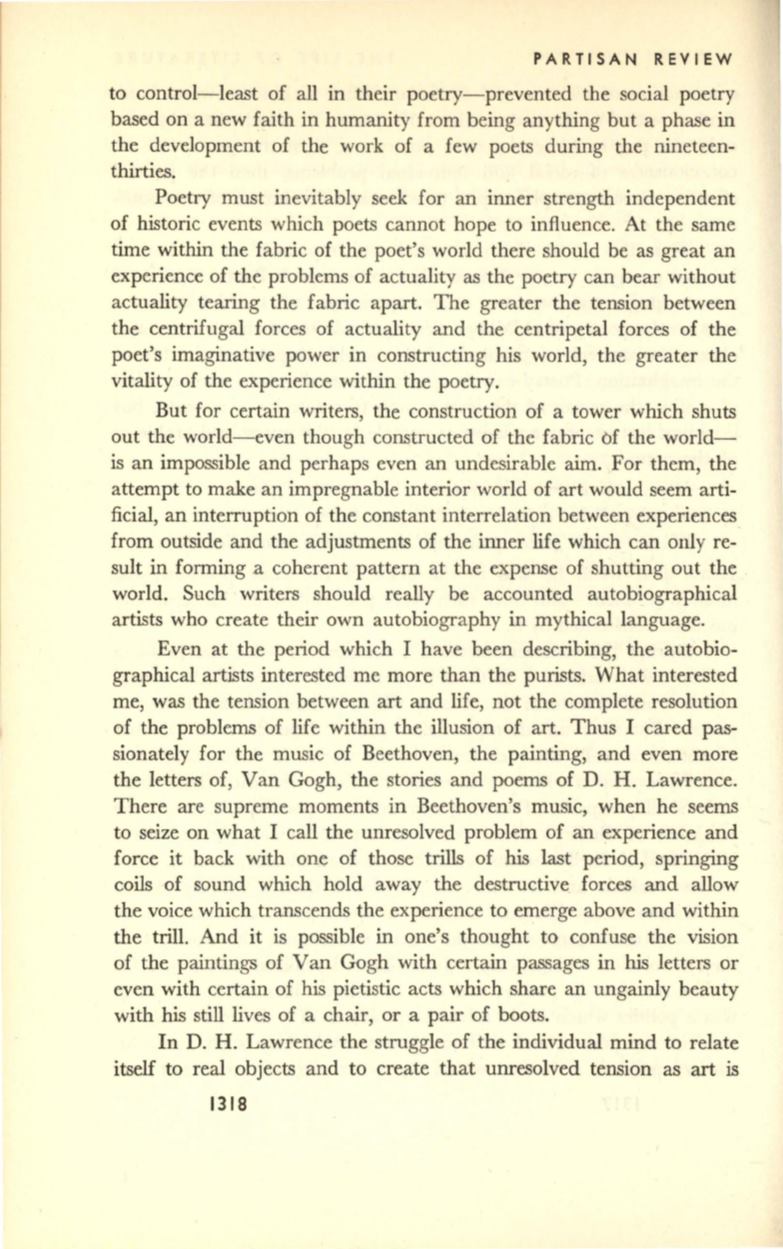
PARTISAN REVIEW
to control-least of
all
in their poetry-prevented the social poetry
based on a new faith in humanity from being anything but a phase in
the development of the work of a few poets during the nineteen–
thirties.
Poetry must inevitably seek for an inner strength independent
of historic events which poets cannot hope to influence. At the same
time within the fabric of the poet's world there should be as great an
experience of the problems of actuality as the poetry can bear without
actuality tearing the fabric apart. The greater the tension between
the centrifugal forces of actuality and the centripetal forces of the
poet's imaginative power in constructing his world, the greater the
vitality of the experience within the poetry.
But for certain writers, the construction of a tower which shuts
out the world- even though constructed of the fabric
of
the world–
is an impossible and perhaps even an undesirable
aim.
For them, the
attempt to make an impregnable interior world of art would seem arti–
ficial, an interruption of the constant interrelation between experiences
from outside and the adjustments of the inner life which can only re–
sult in forming a coherent pattern at the expense of shutting out the
world. Such writers should really be accounted autobiographical
artists who create their own autobiography in mythical language.
Even at the period which I have been describing, the autobio–
graphical artists interested me more than the purists. What interested
me, was the tension between art and life, not the complete resolution
of the problems of life within the illusion of
art.
Thus I cared pas–
sionately for the music of Beethoven, the painting, and even more
the letters of, Van Gogh, the stories and poems of D. H. Lawrence.
There are supreme moments in Beethoven's music, when he seems
to seize on what I call the unresolved problem of an experience and
force it back with one of those trills of
his
last period, springing
coils of sound which hold away the destructive forces and allow
the voice which transcends the experience to emerge above and within
the trill. And it is possible in one's thought to confuse the vision
of the paintings of Van Gogh with certain passages in his letters or
even with certain of his pietistic acts which share an ungainly beauty
with his still lives of a chair, or a pair of boots.
In D. H. Lawrence the struggle of the individual mind to relate
itself to real objects and to create that unresolved tension as
art
is
1318


